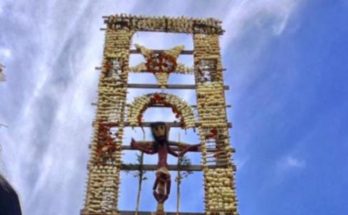By Arturo Morales Tirado
Today, in San Miguel de Allende, we can affirm that we have a cosmopolitan population with local residents and residents from the 32 States of the Mexican Republic and at least, people from 40 countries around the world. It is worth pointing out that this very particular social dynamic in our City and its region has been forged over a slow fire, in a process that has transcended four generations (considering each one in 20 years), in general terms, since the final years of the 1930s to today.
In the case of San Miguel de Allende and its surroundings, as we have pointed out before, we inhabit a geological-geographical border (which has been formed in the last 80 million years), which, in the last 2,500 years, has marked the cultural frontier between volcanic Mesoamerica and semi-desert Aridoamerica, today marked physiographically as the Altos de Guanajuato, with the Bajío region to the south, defined by its extensive volcanic valleys with excellent agricultural land.
In other words, this Inland Border has been a continental port between different ethnic groups since Mesoamerican times, patented in the confluence that existed in the 1530s and 1540s, at the arrival of the first incursions of Spaniards with Otomi allies from Jilotepec (Connín or Hernando de Tapia and Nicolás de San Luis Montañez), plus some Tlaxcalans and Zapotecs; Already, since those years, as a consequence of a natural border, co-existing in our current territory, among others: Copuces, Caxcanes, Guamares Guaxabanas, Pames, Jonases and Otomíes.
Bringing us closer to our contemporary reality, in another context, in the last 80 years, little by little, this cosmopolitan society has been generated, which, among other characteristics, has managed a more tolerant society, open to cultural diversity through starting from valuing the deep identity and sense of belonging of the ancient Mesoamerican culture in our region.
In this sense, as background, the generation of the Mexican post-revolution, in those years, dramatically confronted between the new federal governments that emerged from the first social revolution of the 20th century in the world and the armed groups that for complex reasons opposed these new changes and that were manifested in the armed movement in the center of the country known as the cristero war, in which many families and inhabitants of San Miguel de Allende and its region actively participated in the last years of the 1920s.
This social event contrasted with the vision and perception of life of foreign Mexicans and foreigners who arrived in San Miguel de Allende, in the years of the 1930s, still depopulated compared to the population that the viceregal town had at the end of the 1930s. Viceroyalty in 1810 (estimated at up to 27,000 inhabitants), since, by 1930, the population of our city was only about 9,000 inhabitants.
In this context, in 1935, a Mexican native of the state of Jalisco, a consecrated Hollywood actor and opera tenor in Chicago and New York, began to settle in San Miguel de Allende, his name being José Mojica. He bought a manor house in the south of the former Villa Protectora de San Miguel el Grande (which is still splendid due to the attention of its current owners), so that his mother could live in it, however, the chronicles of those years, collect gatherings with other great artists such as Ramón Novaro, Dolores del Río, San Miguel tenor Pedro Vargas and others, but with them, another famous Mexican from Jalisco, the actor and bullfighter: Pepe Ortiz Puga. Both Mojica and Ortiz were famous public figures who began to put the typical town of Los Altos de Guanajuato on the world stage: San Miguel de Allende.

In 1934, the recent art graduate from Princeton University, Stirling Dickingson and his friend Heat Bowman, in a 1929 Ford A they named Daisy, traveled through Mexico in almost 6 months, from the border to Oaxaca, passing through Celaya , they heard wonders of San Miguel de Allende as a very representative town of central Mexico; by the way, Dickingson, narrates in an excellent book, this wonderful adventure in: Mexican Odyssey. By 1937, Felipe Cossio del Pomar, Peruvian artist and politician, founder of APRA, arrived in exile in Mexico; due to their contacts with intellectuals and artists such as Diego Rivera, Bernardo Reyes and José Vasconcelos, together with Dickingson, they founded in 1938 the first school of arts and crafts that would be the genesis of the four subsequent generations of foreigners and foreigners in today’s cosmopolitan society. of San Miguel de Allende, of which we will comment soon.




